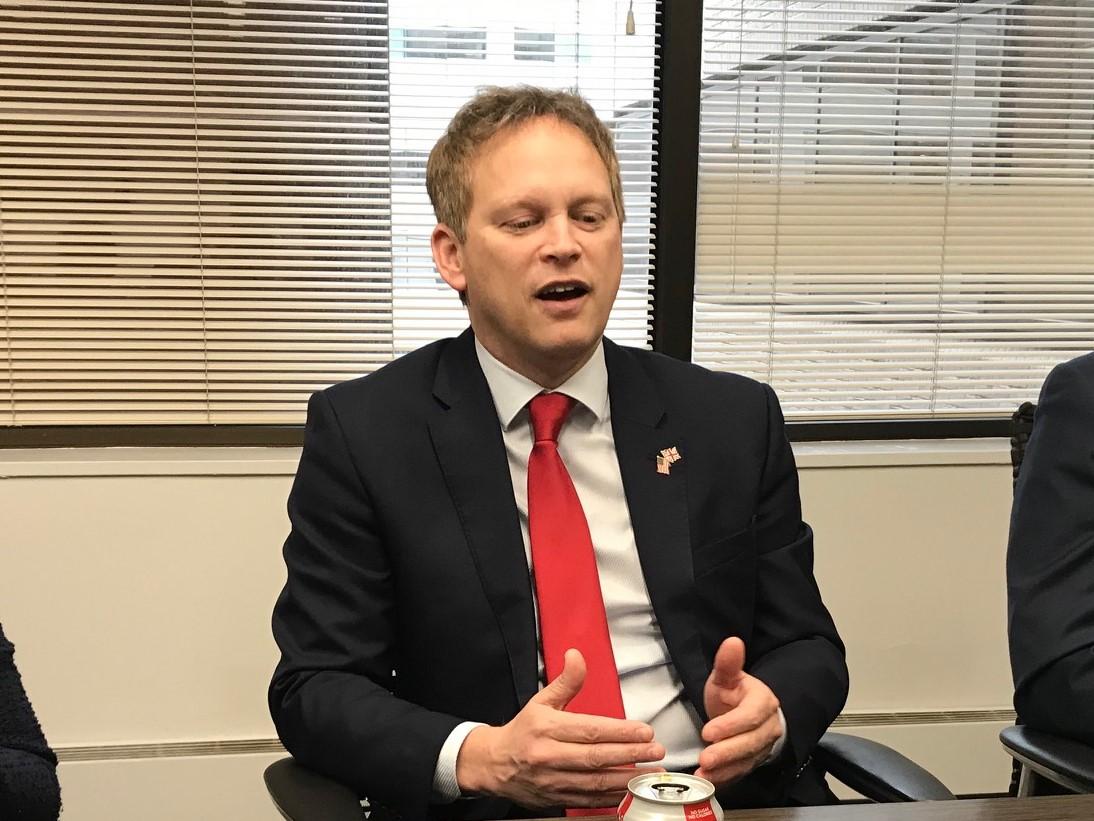
WASHINGTON—The UK will need people skilled in airspace design as it rolls out a major, nation-wide update of its airspace system, British Transportation Secretary Grant Shapps has said.
“We have an enormous amount of airspace reorganization to do, and we have about four qualified airspace designers,” Shapps said Mar. 6 in an exclusive interview with Aviation Week Network editors. “As a government, we’re trying to send a very clear signal to the market that if you happen to have skills in this area or you’re a company who are involved in it, Britain needs you.”
Shapps said legislation making its way in Parliament will underpin the airspace modernization effort, unveiled in spring 2019 by the Department for Transport, to restructure airspace designed in the 1950s around more precise, performance-based navigation flight paths and more efficient departures and arrivals at airports.
The stated goals are to cut down on the “stacking” of aircraft seeking to land at busy airports, reduce the industry’s CO2 emissions, better manage noise and increase airport capacity.
The transport department and the Civil Aviation Authority (CAA) have tasked an independent Airspace Change Organizing Group within public-private air navigation service provider UK NATS to manage 15 airspace change projects across 14 airports and in upper airspace. The industry-funded program is expected to cost £150 million ($197 million).
Shapps said he has also ordered the CAA to accelerate its approval of global navigation satellite system-based instrument approaches to smaller airports.
While there are private companies available that are capable of restructuring airspace, Shapps—himself a pilot—said the UK fundamentally lacks airspace designers. Under the administration of Prime Minister Boris Johnson, the government is focused on promoting aviation skills development and science, technology, engineering and mathematics training, Shapps said.
“Here is a really well-payed job in the aviation sector where we’re lacking the skills,” he said of airspace design. “I’m looking at things like: how do we correct that long-term; how do we train people; how do we import people, frankly; and how do we train people in-house.”
During the interview, Shapps also confirmed that the UK will withdraw as a member state of safety certification and regulatory agency EASA after Dec. 31 as a result of the nation’s “Brexit” policy to leave the EU. For UK companies, functions the agency now performs with British participation will be transferred to the CAA.
On Mar. 4, the CAA posted a notice of its plan to recruit “airworthiness design surveyors” later this year. As part of its “expanded state of design responsibilities resulting from Brexit,” the authority seeks individuals with engineering degrees or experience in other disciplines to evaluate aircraft, engines, propellers, equipment and systems for compliance with airworthiness standards.
The transport department announced the airspace modernization effort on May 31, 2019. In a speech in March 2019, Chris Grayling—Shapps’ predecessor as transport secretary—called airspace redesign “among the most pressing of tasks” and said formal consultations on new flight paths would begin in 2021-22.
Without action, one in three flights could be delayed by a half hour or more by 2030, costing the UK around £250 million a year, according to the department.
